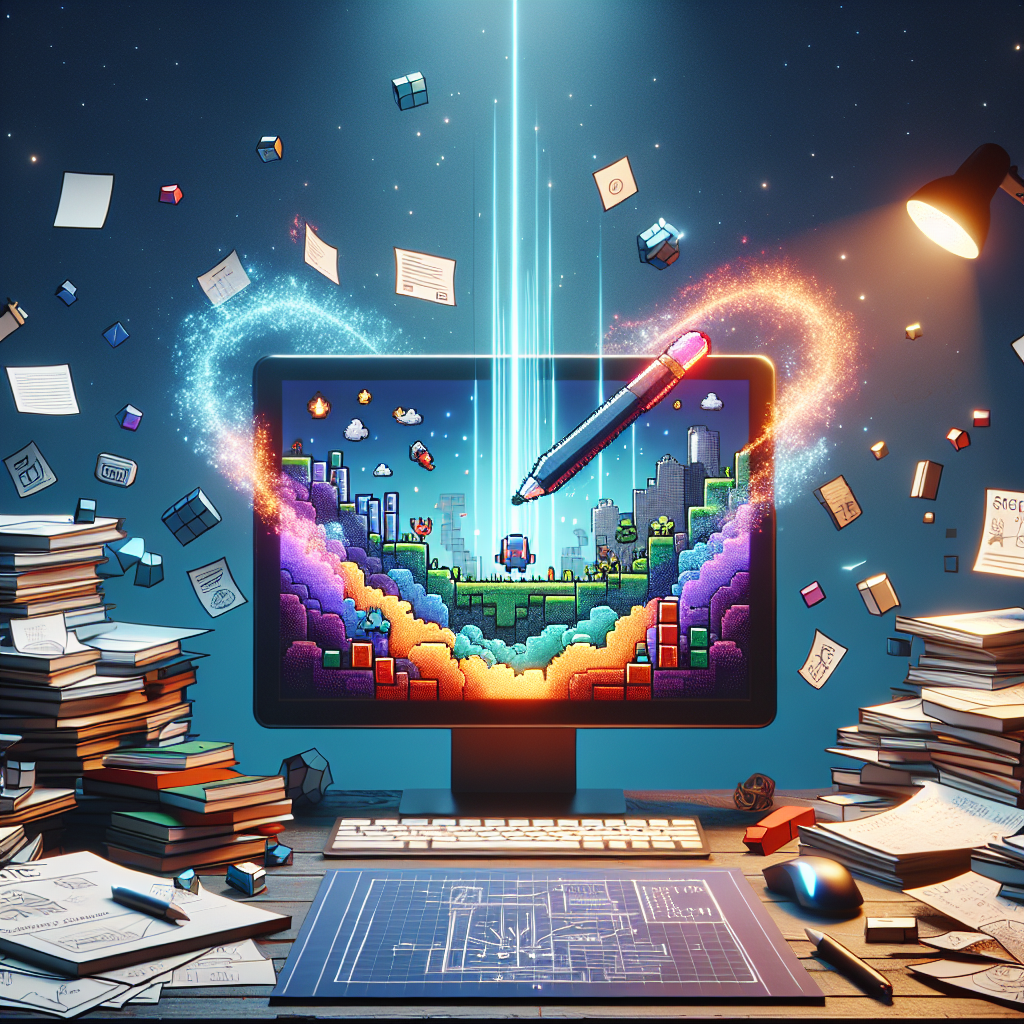Pixel Perfect: How to Create Your First Game with Easy-to-Follow Tutorials
The world of game development has never been more inviting. With technology progressing rapidly and numerous resources available online, creating your first game is an achievable goal. Whether you’re a complete novice or someone with some coding background, the beauty of pixel art and the simplicity of intuitive game design can help you bring your creative visions to life. This article will guide you through the essentials of game development, focusing on pixel-perfect art style and easy-to-follow tutorials that will ease you into creating your first game.
Why Choose Pixel Art?
Pixel art is a popular style among indie developers because it combines nostalgia with a unique charm. Its low-resolution graphics allow developers to create engaging visuals without the need for complex 3D modeling. Additionally, pixel art is more forgiving for beginners. With fewer details, artists can focus on color palettes, character designs, and environmental aspects without feeling overwhelmed. Learning to create pixel art enhances your understanding of art fundamentals while keeping your project manageable.
Getting Started: Tools for Pixel Art and Game Development
-
Pixel Art Software: To design your pixel art graphics, you can utilize various free and paid software, such as:
- Aseprite (paid) – A powerful pixel art and animation tool with an intuitive interface.
- Piskel (free) – An online editor that allows for easy pixel art creation and has basic animation features.
- GIMP or Photoshop (both have free trials) – More general graphic design software that can also be used for pixel art, though they are less specialized.
- Game Engines: The next step is choosing a game engine to bring your pixel art to life. Here are a few popular options:
- Unity: Known for its versatility and a vast number of resources, Unity supports 2D and 3D game development. Plenty of tutorials cater specifically to pixel art games.
- Godot: An open-source engine perfect for 2D game development, Godot has a user-friendly interface and a growing community that offers helpful resources.
- GameMaker Studio: Ideal for beginners, GameMaker Studio provides a drag-and-drop interface and a built-in scripting language, making it simpler to create games.
Step-by-Step Tutorials
Once you have your tools, the next step is following some tutorials to get you started on your game development journey. Here’s a structured approach:
1. Learn the Basics of Pixel Art
Begin your journey by familiarizing yourself with the essentials of pixel art:
- Shapes and Silhouettes: Start by learning to create basic shapes using simple pixel layouts before moving on to more complex designs. Key tutorial resources include:
- YouTube channels like “Brandon James Greer” and “MortMort” provide insightful video tutorials on creating pixel art step by step.
2. Create Your First Character
Create a simple character, focusing on basic movements (walking, jumping):
- Follow tutorials that walk you through character creation, such as:
- "Creating Pixel Art Characters" by “Eduardo Silva” on YouTube, where you learn to design your own quirky heroes.
- Use Aseprite or Piskel for animating basic movements.
3. Build Your Game Level
Once you have your character designed, it’s time to create the game environment:
- Look for tutorials like “Making a 2D Platformer in Unity” or “Creating 2D Games in Godot” on platforms such as Udemy or Coursera.
- Go step-by-step to build your level, lay out platforms, and include obstacles.
4. Add Game Mechanics
Learn how to implement character controls and basic game mechanics, like collision detection and enemy AI:
- Source beginner-friendly tutorials that break down the process. For example, “Game Development with Unity: 2D Game Development” can guide you through implementing mechanics.
5. Testing and Iteration
Testing your game will help identify issues and areas for improvement. Use feedback from friends and community forums to refine your game:
- Participate in game jams (like Ludum Dare) to practice, receive rapid feedback, and iterate on your design.
6. Publish Your Game
Once your game is complete, explore avenues for publishing. Platforms like itch.io allow indie developers to showcase their work with minimal barriers:
- Look for tutorials on how to package and publish your game for different platforms.
Bonus: Engage with the Community
Joining online communities (like Reddit’s r/gamedev and Discord servers dedicated to game development) can provide you with immense support and access to resources, such as free assets, feedback, and collaboration opportunities.
Final Thoughts
Creating your first game can be an exhilarating journey filled with challenges and triumphs. By choosing pixel art, you can easily create visually appealing graphics and engage in a style that resonates with many players. The plethora of tutorials and community support available today ensures that you won’t have to navigate this path alone. So, gather your ideas, equip yourself with the right tools, immerse yourself in pixel art, and start building your first game. The gaming world is waiting for your unique creation!




